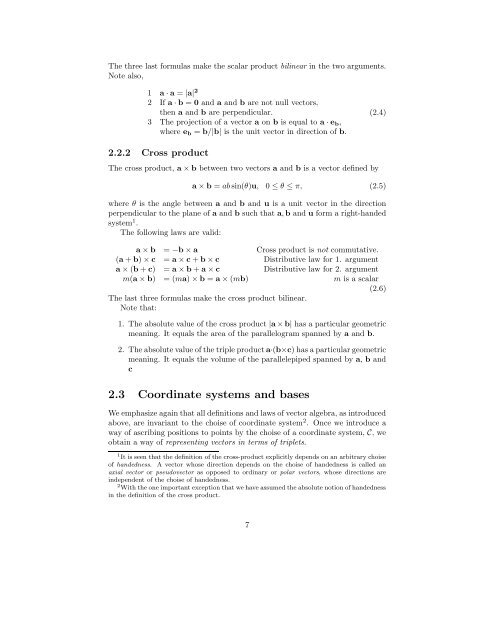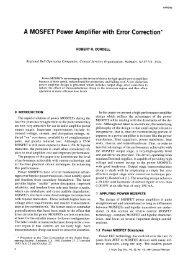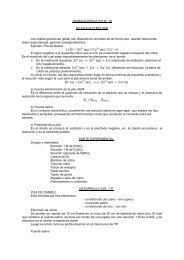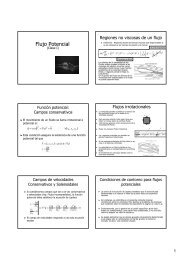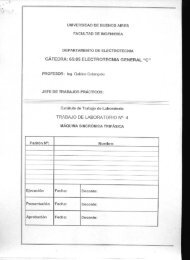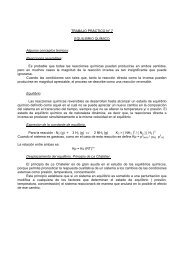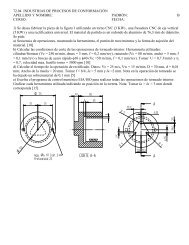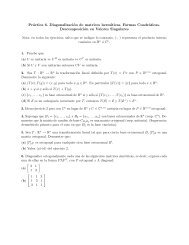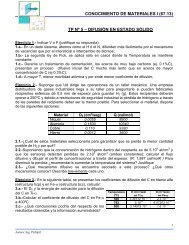Introduction to vector and tensor analysis
Introduction to vector and tensor analysis
Introduction to vector and tensor analysis
Create successful ePaper yourself
Turn your PDF publications into a flip-book with our unique Google optimized e-Paper software.
The three last formulas make the scalar product bilinear in the two arguments.<br />
Note also,<br />
1 a · a = |a| 2<br />
2 If a · b = 0 <strong>and</strong> a <strong>and</strong> b are not null vec<strong>to</strong>rs,<br />
then a <strong>and</strong> b are perpendicular.<br />
3 The projection of a vec<strong>to</strong>r a on b is equal <strong>to</strong> a · eb,<br />
where eb = b/|b| is the unit vec<strong>to</strong>r in direction of b.<br />
2.2.2 Cross product<br />
The cross product, a × b between two vec<strong>to</strong>rs a <strong>and</strong> b is a vec<strong>to</strong>r defined by<br />
(2.4)<br />
a × b = ab sin(θ)u, 0 ≤ θ ≤ π, (2.5)<br />
where θ is the angle between a <strong>and</strong> b <strong>and</strong> u is a unit vec<strong>to</strong>r in the direction<br />
perpendicular <strong>to</strong> the plane of a <strong>and</strong> b such that a, b <strong>and</strong> u form a right-h<strong>and</strong>ed<br />
system 1 .<br />
The following laws are valid:<br />
a × b = −b × a Cross product is not commutative.<br />
(a + b) × c = a × c + b × c Distributive law for 1. argument<br />
a × (b + c) = a × b + a × c Distributive law for 2. argument<br />
m(a × b) = (ma) × b = a × (mb) m is a scalar<br />
(2.6)<br />
The last three formulas make the cross product bilinear.<br />
Note that:<br />
1. The absolute value of the cross product |a × b| has a particular geometric<br />
meaning. It equals the area of the parallelogram spanned by a <strong>and</strong> b.<br />
2. The absolute value of the triple product a·(b×c) has a particular geometric<br />
meaning. It equals the volume of the parallelepiped spanned by a, b <strong>and</strong><br />
c<br />
2.3 Coordinate systems <strong>and</strong> bases<br />
We emphasize again that all definitions <strong>and</strong> laws of vec<strong>to</strong>r algebra, as introduced<br />
above, are invariant <strong>to</strong> the choise of coordinate system 2 . Once we introduce a<br />
way of ascribing positions <strong>to</strong> points by the choise of a coordinate system, C, we<br />
obtain a way of representing vec<strong>to</strong>rs in terms of triplets.<br />
1 It is seen that the definition of the cross-product explicitly depends on an arbitrary choise<br />
of h<strong>and</strong>edness. A vec<strong>to</strong>r whose direction depends on the choise of h<strong>and</strong>edness is called an<br />
axial vec<strong>to</strong>r or pseudovec<strong>to</strong>r as opposed <strong>to</strong> ordinary or polar vec<strong>to</strong>rs, whose directions are<br />
independent of the choise of h<strong>and</strong>edness.<br />
2 With the one important exception that we have assumed the absolute notion of h<strong>and</strong>edness<br />
in the definition of the cross product.<br />
7


